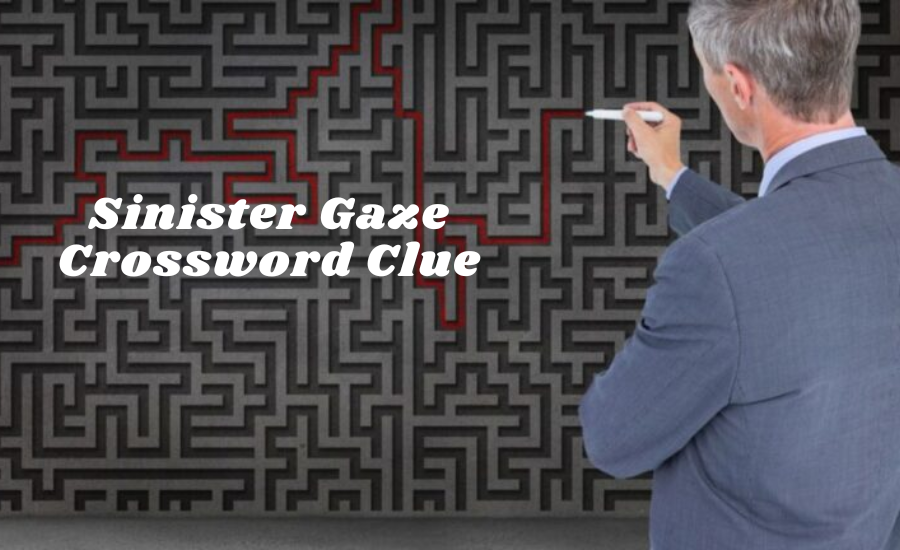Crossword puzzles are a delightful mix of challenge and amusement, combining clever wordplay with the thrill of discovery. Among the many intriguing clues you might come across, the “Sinister Gaze Crossword Clue” stands out with its air of mystery. This clue evokes images of shadowy figures and intense stares, inviting solvers to unravel its secrets.
Whether you’re a crossword aficionado with years of experience or a newcomer just getting started, solving this clue can feel like uncovering a hidden gem. It’s all about diving into the riddle, piecing together hints, and enjoying the satisfaction of finding the answer. So, let’s take a closer look at this enigmatic clue and explore some strategies to help you crack it.
What Does the Sinister Gaze Crossword Clue Mean?
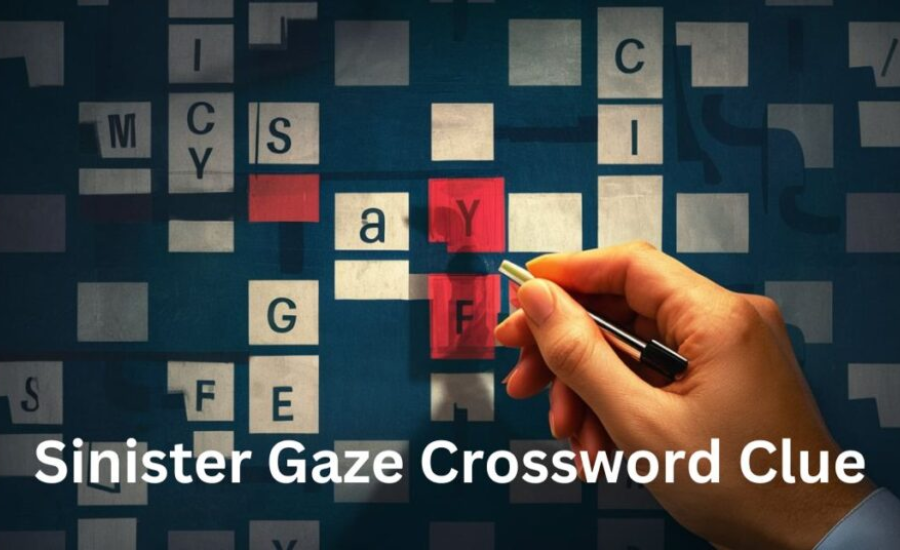
Crossword puzzles are a fascinating blend of challenge and creativity, inviting solvers into a world where words and clues come to life. Among these challenges, the “Sinister Gaze Crossword Clue” stands out as particularly intriguing. This clue paints a vivid picture of something both mysterious and unsettling, evoking images of intense and ominous stares that can send a chill down your spine. The phrase itself invites a range of interpretations, from fear and suspicion to something even more menacing, adding an extra layer of allure to the puzzle.
Deciphering such clues often feels like peeling away layers of a complex enigma. Each letter and word slot into place like pieces of a larger puzzle, revealing their hidden meanings as you progress. Context plays a crucial role here; sometimes, recognizing familiar phrases or literary references can provide valuable hints. Solving the “Sinister Gaze” clue is not just about finding the right answer but also about engaging with language in a way that sparks curiosity and sharpens your mind. It’s a perfect example of how crossword puzzles can turn wordplay into a deeply engaging and thought-provoking experience.
Historical Background Of The “Sinister Gaze” Crossword Clue
The “sinister gaze” crossword clue is steeped in the rich tradition of crossword puzzles, which have been celebrated for their intellectual stimulation and entertainment since their inception. This type of clue draws from the long-standing tradition of cryptic clues, which became popular in the early days of crosswords. These clues often used metaphor and wordplay to challenge solvers’ thinking. The “sinister gaze” clue, with its dark and mysterious undertones, reflects a tradition of pushing the boundaries of linguistic creativity.
Origins and Development Of The “Sinister Gaze” Clue
The origins of the “sinister gaze” clue trace back to the rise of cryptic crosswords, where constructors started using more abstract and metaphorical clues to add depth and intrigue to puzzles. Constructors often use these clues to reference villains or characters from literature and films known for their ominous or menacing gazes.
Over time, clues like “sinister gaze” have evolved to incorporate references from literature, pop culture, and psychology, providing a more immersive experience for solvers. This evolution mirrors broader trends in crossword construction, where the aim is not just to test vocabulary, but to engage solvers in deeper, more thought-provoking ways.
Notable Puzzles Featuring The “Sinister Gaze” Clue
The “sinister gaze” clue has appeared in several well-known crossword puzzles, often as a memorable challenge for even the most experienced solvers. Prestigious publications like The New York Times and The Guardian feature this type of clue in puzzles renowned for their complexity and ingenuity. In these puzzles, the “sinister gaze” clue often serves as a key piece of a larger thematic or narrative framework, enhancing the overall intrigue and challenge.
The frequent appearance of this clue in such esteemed puzzles demonstrates its enduring appeal. It challenges solvers to draw on a wide range of knowledge, from language and culture to psychology, making it a favorite among both constructors and players.
Key Features Of The “Sinister Gaze” Crossword Clue
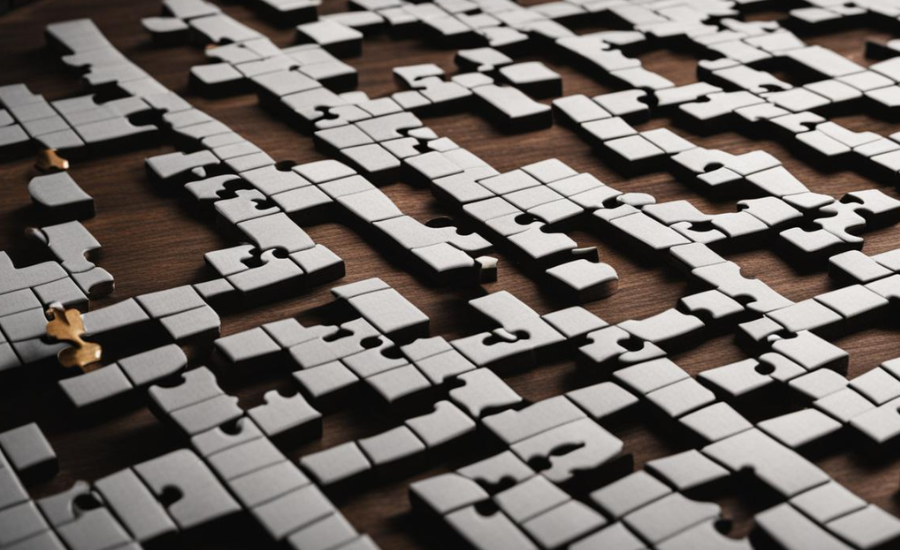
| Feature | Description |
|---|---|
| Use of Synonyms and Antonyms | The clue often involves synonyms or antonyms. For example, “sinister” could be replaced with “evil” or “threatening,” while “gaze” might be “stare” or “look.” These variations add complexity to the puzzle. |
| Pattern Recognition | The clue might be constructed with specific letter patterns. Attention to letter counts and common crossword structures can help identify the correct answer. Recognizing prefixes or suffixes can also be useful. |
| Contextual Clues | The answer can often be inferred from intersecting clues. Filling in nearby answers can provide hints or eliminate possibilities, aiding in solving the puzzle. |
| Cultural Tropes | The clue may reference cultural or literary archetypes associated with sinister looks. Familiarity with villainous characters in literature or film can offer valuable insights. |
| Lateral Thinking | Creative thinking is required to consider metaphorical or figurative meanings of “sinister” and “gaze.” This broadens the scope of potential answers, encouraging out-of-the-box solutions. |
When solving the “Sinister Gaze” crossword clue, several key features come into play. The clue frequently uses synonyms and antonyms, where terms like “evil” or “threatening” for “sinister” and “stare” or “look” for “gaze” can provide different angles to consider. Recognizing specific letter patterns and common crossword structures is crucial, as is using context from intersecting clues to infer the answer. Additionally, understanding cultural and literary references to villainous or sinister characters can offer valuable hints. Lastly, lateral thinking is essential; approaching the clue with a creative mindset and exploring metaphorical meanings can expand the range of potential solutions.
Possible Solutions And Their Interpretations
- Leer: A term that implies a sly or malevolent look, suggesting something creepy or unsettling, fitting the “sinister” aspect of the clue.
- Stare: Refers to an intense, prolonged look that can feel invasive or uncomfortable, evoking a sense of unease.
- Glare: Describes a sharp, angry, or disapproving look, conveying hostility and intensity, suitable for a clue suggesting a threatening gaze.
- Squint: Though less immediately threatening, a squint can suggest suspicion or scrutiny, adding a nuanced interpretation to the idea of a menacing gaze.
Each term provides a unique dimension to the concept of a “sinister gaze,” offering diverse possibilities for crossword answers.
Common Techniques Used By Sinister Gaze Crossword Clue Creators
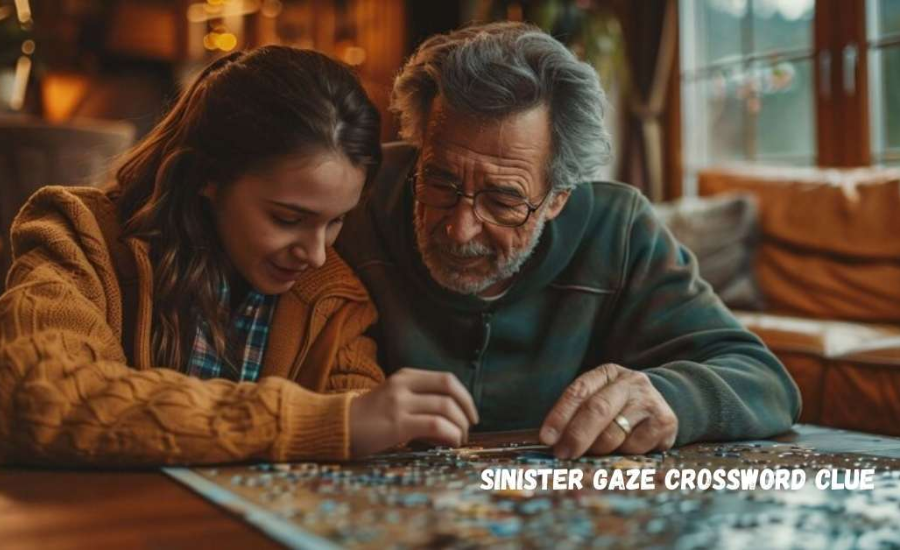
1. Playful Wordplay: Creators often employ puns and double meanings to add a layer of complexity. The “Sinister Gaze” clue might use clever twists on words that challenge solvers to think creatively.
2. Cultural Allusions: References to literature, film, or popular culture are commonly used. By tapping into well-known villainous or ominous characters, the clue gains additional depth and resonance.
3. Synonyms and Antonyms: Playing with synonyms or antonyms can lead to unexpected solutions. A word like “stare” might be transformed in surprising ways, requiring solvers to explore various possibilities.
4. Recognizing Patterns: Creators often use specific letter counts and vowel placements to hint at the answer. Spotting these patterns can help narrow down potential solutions and guide you toward the correct answer.
By mixing these methods, clue creators craft crossword puzzles that are not only challenging but also enjoyable to unravel, offering both a mental challenge and a rewarding sense of accomplishment.
Tips For Adolescents Dealing With Difficult Crossword Clues
1. Leverage Known Letters: Begin by filling in any letters you are confident about. Even one letter can help steer you toward the correct answer and clarify the puzzle’s structure.
2. Explore Word Patterns: Pay attention to common prefixes and suffixes that might fit the clue. Recognizing familiar word patterns can simplify identifying the right solution.
3. Think About Antonyms: The clue might not be as direct as it appears. Consider if it might be hinting at the opposite or a contrasting idea.
4. Use Clues from Context: Examine the answers to adjacent clues. They can provide hints or help eliminate incorrect choices, making it easier to find the correct answer.
5. Build Your Skills with Practice: Start with simpler puzzles to develop your skills before tackling more complex ones. Regular practice will enhance your problem-solving abilities and confidence.
And don’t forget, it’s okay to take a break if you’re feeling frustrated. Sometimes stepping away and returning with a fresh perspective can help you see the solution more clearly.
Examples Of The “Sinister Gaze” Crossword Clue In Practice
Real-world examples of the “sinister gaze” crossword clue show how it appears in actual puzzles. For instance, a crossword might use a clue like “Intense and threatening look,” prompting the answer “glare” or “scowl.” Another example could involve a hint connected to a famous character with a menacing look, such as “Villain’s look in fiction,” leading to “leer.” These examples demonstrate the varied ways a sinister gaze can be described, helping solvers understand how such clues are constructed.
Examining these examples offers practical insights into solving similar clues, showing how constructors phrase clues and which synonyms they frequently use. This can help solvers become more adept at identifying patterns in future puzzles.
Case Studies Of Noteworthy “Sinister Gaze” Crossword Clues
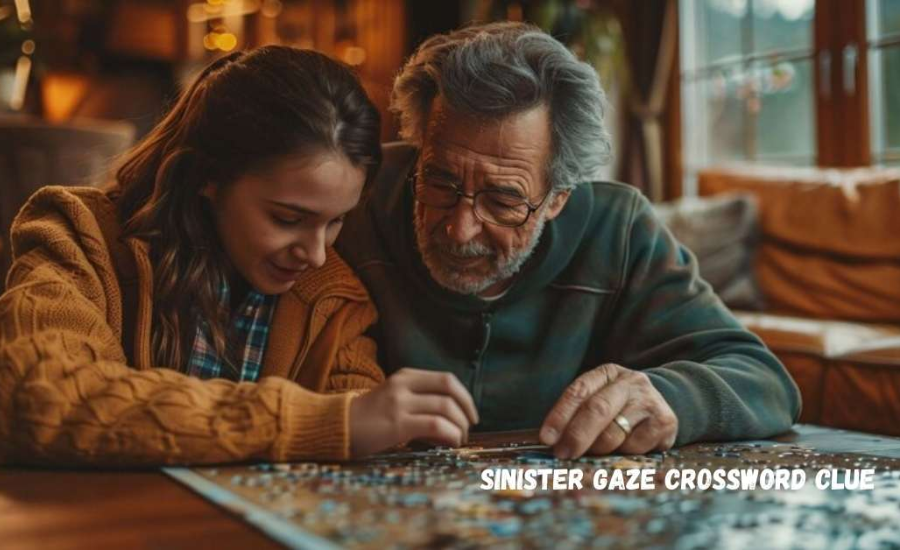
Exploring case studies of notable “sinister gaze” crossword clues gives insight into their creation and the techniques used to solve them. For example, a memorable clue might use the phrase “dark look,” which would require solvers to consider synonyms for both “dark” and “look.” Another case might involve a high-profile crossword where cultural references or clever wordplay hinted at the answer. Analyzing these examples helps reveal how constructors employ language subtleties and thematic elements to craft challenging clues.
Studying how these clues were solved helps solvers develop strategies for tackling similar challenges in the future, improving their ability to handle complex crossword puzzles.
Understanding Past Solutions To “Sinister Gaze” Clues
Looking at past solutions to “sinister gaze” clues involves analyzing how these clues were approached and identifying recurring patterns or common answers. For example, if previous clues led to answers like “glare,” “scowl,” or “leer,” these answers highlight the types of words often associated with a “sinister gaze.” Understanding the context in which these solutions were used can help solvers anticipate similar answers in future puzzles.
Additionally, examining different constructors’ approaches reveals variations in style and wordplay. This analysis helps solvers apply learned strategies to new puzzles, improving their ability to decipher complex clues effectively.
The Psychological Effect Of The Sinister Gaze Crossword Clue
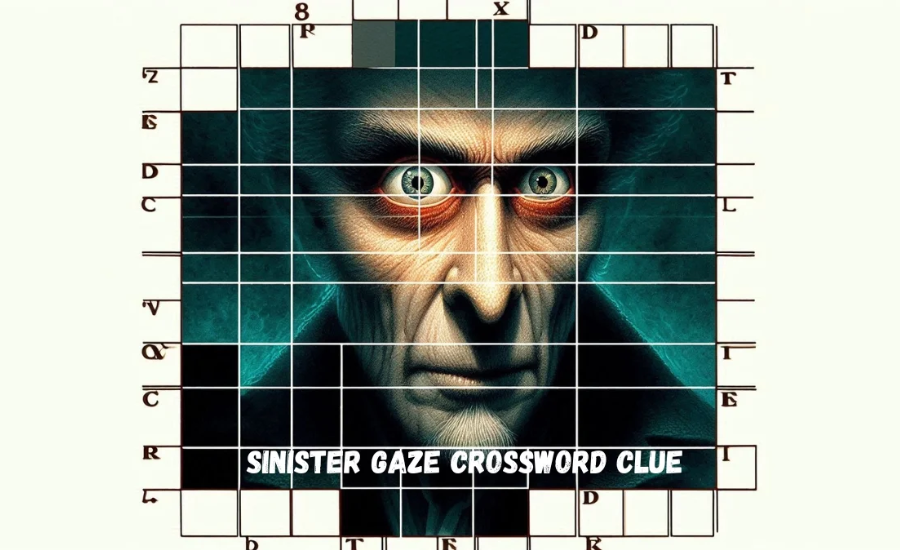
The “sinister gaze” crossword clue can deeply affect solvers’ psychology by tapping into common emotions like unease or discomfort. The phrase brings to mind a dark, threatening stare, which can provoke feelings of tension or anxiety. These unsettling emotions may make the clue harder to crack, as solvers might find themselves distracted by the vivid, eerie imagery it evokes.
Additionally, this clue challenges solvers to confront the unknown or mysterious, prompting them to dig deeper into their understanding of words and meanings. This psychological complexity is part of what makes the “sinister gaze” clue so memorable, adding a unique depth that goes beyond simple word games and engages solvers on a more emotional level.
Emerging Trends In Crossword Clues
As crossword puzzles continue to develop, clues like “sinister gaze” are likely to feature more advanced wordplay and diverse cultural references. Future puzzles may integrate more intricate linguistic tricks and nods to contemporary media, mirroring the ever-changing landscape of language and pop culture. Solvers might face clues that challenge not just their grasp of synonyms, but also their ability to connect these clues with broader themes from art, literature, and film, adding new levels of complexity and intrigue.
Technological advancements are also set to transform the crossword-solving experience. Digital platforms and apps could introduce interactive elements that offer hints or suggest patterns based on user activity. Such innovations could make solving tricky clues like “sinister gaze” easier and more engaging for both beginners and seasoned crossword enthusiasts. As technology becomes more integrated into puzzle creation, it will likely ensure that the solving process remains dynamic and captivating.
Wrapping Up
The “sinister gaze” crossword clue is a clever and thought-provoking challenge often found in various crossword puzzles. Solvers can expect wordplay involving synonyms and antonyms, such as “leer,” “glare,” “stare,” or “scowl,” each reflecting a different aspect of a threatening or intense look. Constructors frequently tap into cultural references, such as villains or characters from literature and film known for their ominous or menacing gazes.
To solve these clues effectively, solvers should recognize common patterns, letter counts, and context provided by intersecting clues. The psychological impact of this clue comes from its ability to evoke a sense of unease or discomfort, adding depth and complexity to the problem-solving process. Real-world examples show that the clue can take many forms, challenging solvers to think creatively and apply lateral thinking skills.
Over time, the sinister gaze clue has evolved, reflecting both historical contexts and modern trends in crossword design. Its inclusion in famous puzzles highlights its popularity among constructors for providing an engaging, multi-layered solving experience. The future of crossword clues like this may involve even more sophisticated wordplay and integration of digital tools, enhancing both the challenge and enjoyment for solvers.
Stay in touch for more updates and alerts visit: Latest Dash!

